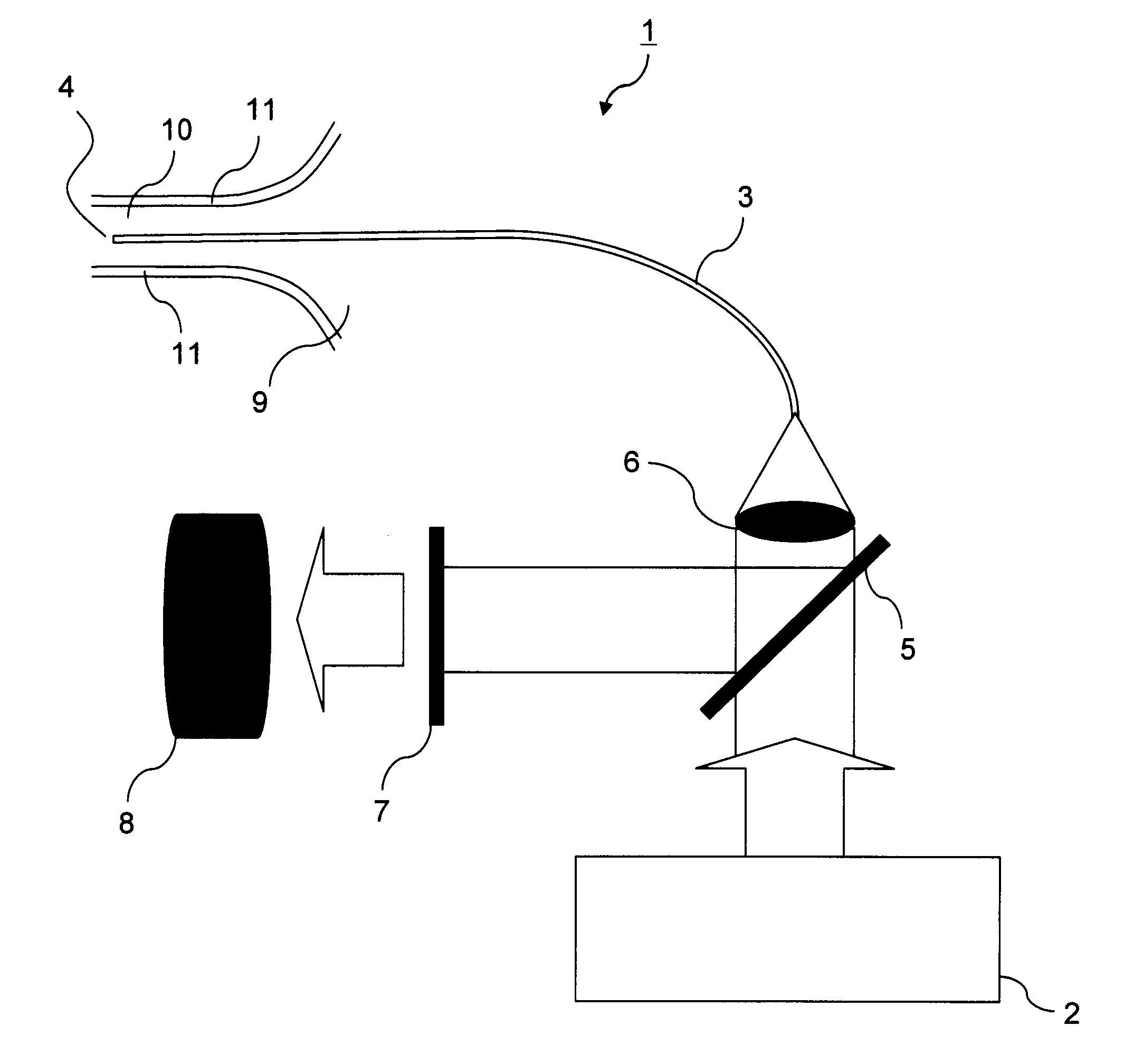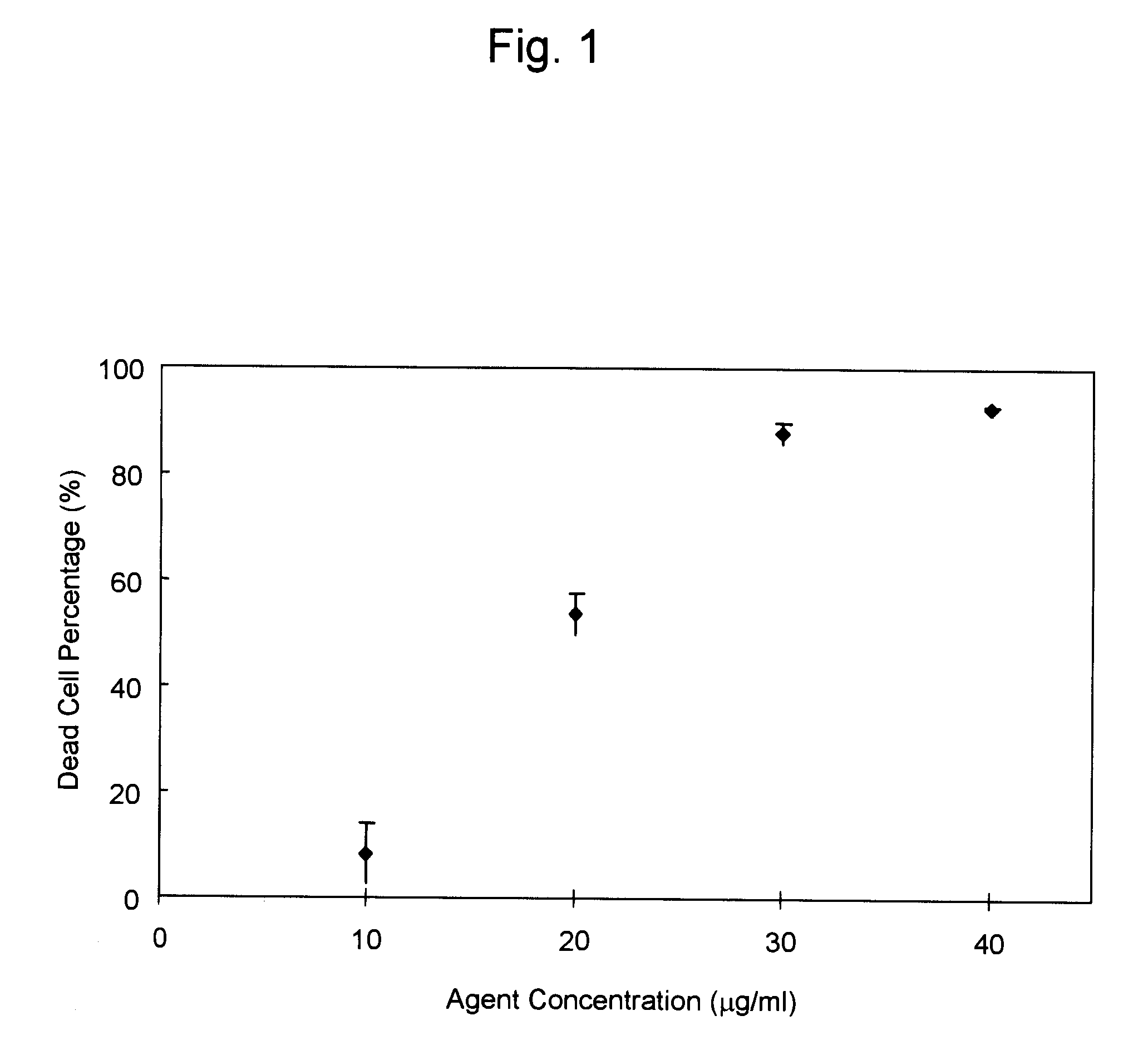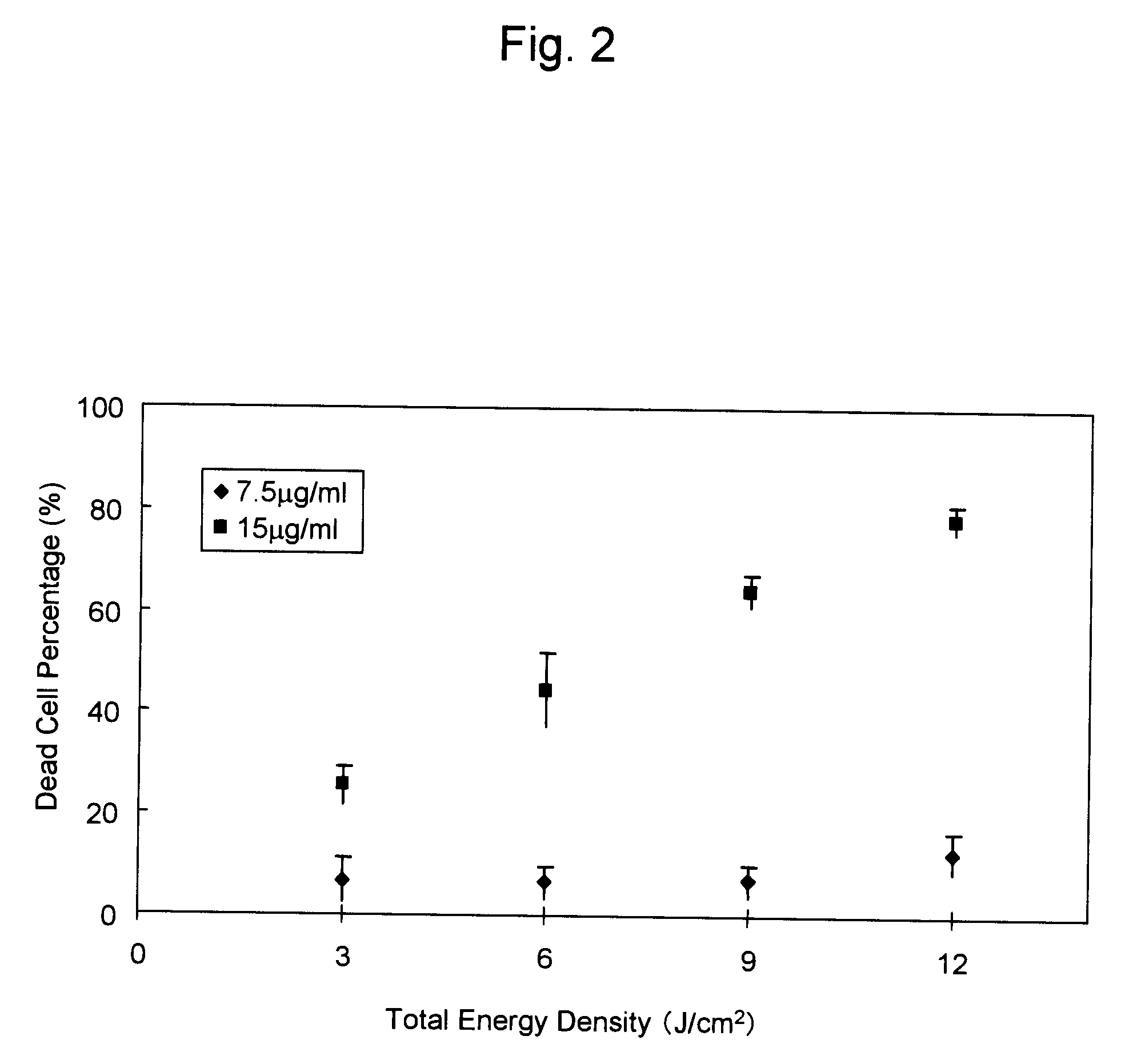Abnormal electrical conduction blocking apparatus using photodynamic therapy (PDT)
a technology of photodynamic therapy and electrical conduction blocking, which is applied in the field of treatment of arrhythmias, can solve the problems of tachyarrhythmia, high heart rate, and persistent heart rate above the sinus rhythm, and achieve the effects of improving the quality of li
- Summary
- Abstract
- Description
- Claims
- Application Information
AI Technical Summary
Benefits of technology
Problems solved by technology
Method used
Image
Examples
example 1
PDT Effects on Cell Strain H9c2 (2-1) Derived from Rat Cardiac Muscle
[0149]Using a skeletal muscle-like myoblast strain H9c2 (2-1) derived from the rat cardiac muscle, the relationship between the photosensitizer concentration and the cell lethality and the laser output required to induce cell death were investigated.
[0150]The above-mentioned cells were subcultured in a D-MEM+10% FBS medium, confluent cells were isolated, seeded on a 96-well microplate, and cultured at 37° C. under 5% CO2 for one day.
[0151]The cultured cells were adjusted to a density of 2.0×104 cells / well. As a photosensitizer, talaporfin sodium was dissolved in a medium at various concentrations and added at a concentration of 0.1 ml / well. After 1 to 2 h of loading, cells were irradiated with a laser beam. After completion of irradiation, the medium was replaced.
[0152]At this time, in a 0.5-cm2 irradiation field (=area of the well) was irradiated with a continuous semiconductor laser beam (peak wavelength, 670.8 n...
example 2
Formation of Electrical Conduction Block in Isolated Cardiac Muscle Tissue
[0171]An electrical conduction block was formed by performing PDT using a cardiac muscle tissue.
[0172]A cardiac muscle tissue was isolated from a Wister rat, immersed in a perfusion fluid (Tyrode's solution [aerated with 95% O2 and 5% CO2 gases and stored at 37° C. in a constant-temperature apparatus]), spread, fixed on the floor (made of silicon) of a tissue bath with a tungsten wire to prepare a spread sample (maximum 1.5 cm long, 1.0 cm width, 0.18 cm thickness) of an isolated ventricular muscle. A perfusion fluid was passed through the spread sample and stabilized by allowing to stand for approx. 3 h. At this time, the perfusion fluid was not reused.
[0173]As a photosensitizer, talaporfin sodium was dissolved in a perfusion fluid at 4.3 μg / ml, and 300 cc was circulated and perfused. It is assumed that, when a photosensitizer is intravenously injected to a 300-g rat at approx. 2 mg / kg, the photosensitizer is...
example 3
Effects of PDT on Cultured Cardiac Muscle Cells
[0180]The relationship between the photosensitizer concentration and the cell lethality and the laser output required to induce a cell death were investigated using rat cardiac muscle cells in primary culture.
[0181]Cardiac muscle cells in primary culture were purchased from Cell Garage Co., Ltd. as an extract from the rat ventricular muscle. As a medium, D-MEM / F12+10% FBS was used.
[0182]Cardiac muscle cells in primary culture were purchased in suspension and seeded on a 96-well microplate. Cells were cultured at 37° C. under 5% CO2, and cells on days 3 and 7 of culture were used. The cardiac muscle cells in primary culture were pulsatile, and pulsations among cells were synchronizing.
[0183]Cardiac muscle cells in primary culture were adjusted to a density of 2.0×104 cells / well. As a photosensitizer talaporfin sodium was dissolved in a medium at various concentrations and added at a concentration of 0.1 ml / well. After 1 to 2 h of loading...
PUM
| Property | Measurement | Unit |
|---|---|---|
| temperature | aaaaa | aaaaa |
| concentration | aaaaa | aaaaa |
| concentration | aaaaa | aaaaa |
Abstract
Description
Claims
Application Information
 Login to View More
Login to View More - R&D
- Intellectual Property
- Life Sciences
- Materials
- Tech Scout
- Unparalleled Data Quality
- Higher Quality Content
- 60% Fewer Hallucinations
Browse by: Latest US Patents, China's latest patents, Technical Efficacy Thesaurus, Application Domain, Technology Topic, Popular Technical Reports.
© 2025 PatSnap. All rights reserved.Legal|Privacy policy|Modern Slavery Act Transparency Statement|Sitemap|About US| Contact US: help@patsnap.com



